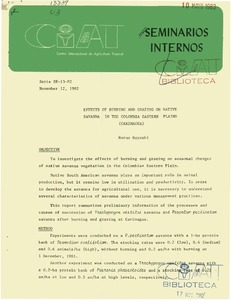Mission
To reduce hunger and poverty, and improve human nutrition in the tropics through research aimed at increasing the eco-efficiency of agriculture.
People
CIAT’s staff includes about 200 scientists. Supported by a wide array of donors, the Center collaborates with hundreds of partners to conduct high-quality research and translate the results into development impact. A Board of Trustees provides oversight of CIAT’s research and financial management.
Values
- Shared organizational ethic
- We respect each other, our partners, and the people who benefit from our work. We act with honesty, integrity, transparency, and environmental responsibility in all of our joint endeavors.
- Learning through partnerships
- We work efficiently and pragmatically together and with partners. Considering our diversity to be a key asset, we adapt readily to change and strive to improve our performance through continuous learning.
- Innovation for impact
- We develop innovative solutions to important challenges in tropical agriculture, resulting in major benefits for the people who support, participate in, and profit from our work.
Members:
Resources
Displaying 861 - 865 of 958Land resources, soils and their management in the Amazon region: a state of knowledge report
General evolution of the agricultural potential of the Bolivian Amazon
Ganadería doble propósito: diagnóstico de sistemas de las provincias centrales, Panamá: información preliminar
Effects of burning and grazing on native savanna in the Colombia Eastern Plains (Carimagua)
Se presenta informacion preliminar acerca del proceso y las causas de sucesion de sabanas de Trachypogon vestitus y de Paspalum pectinatum despues de quema y pastoreo, en Carimagua, Colombia. En varios expt. en los cuales se aplicaron diferentes tasas de carga a parcelas con y sin quema, se observo que la cobertura de plantas tendio a ser mayor en las parcelas con quema, a la mayor tasa de carga y al inicio y al final de la epoca seca. La quema y el pastoreo no afectaron el no. de plantas emergentes. Despues de la quema y con tasa de carga baja, T. vestitus predomino en la sabana de P.



